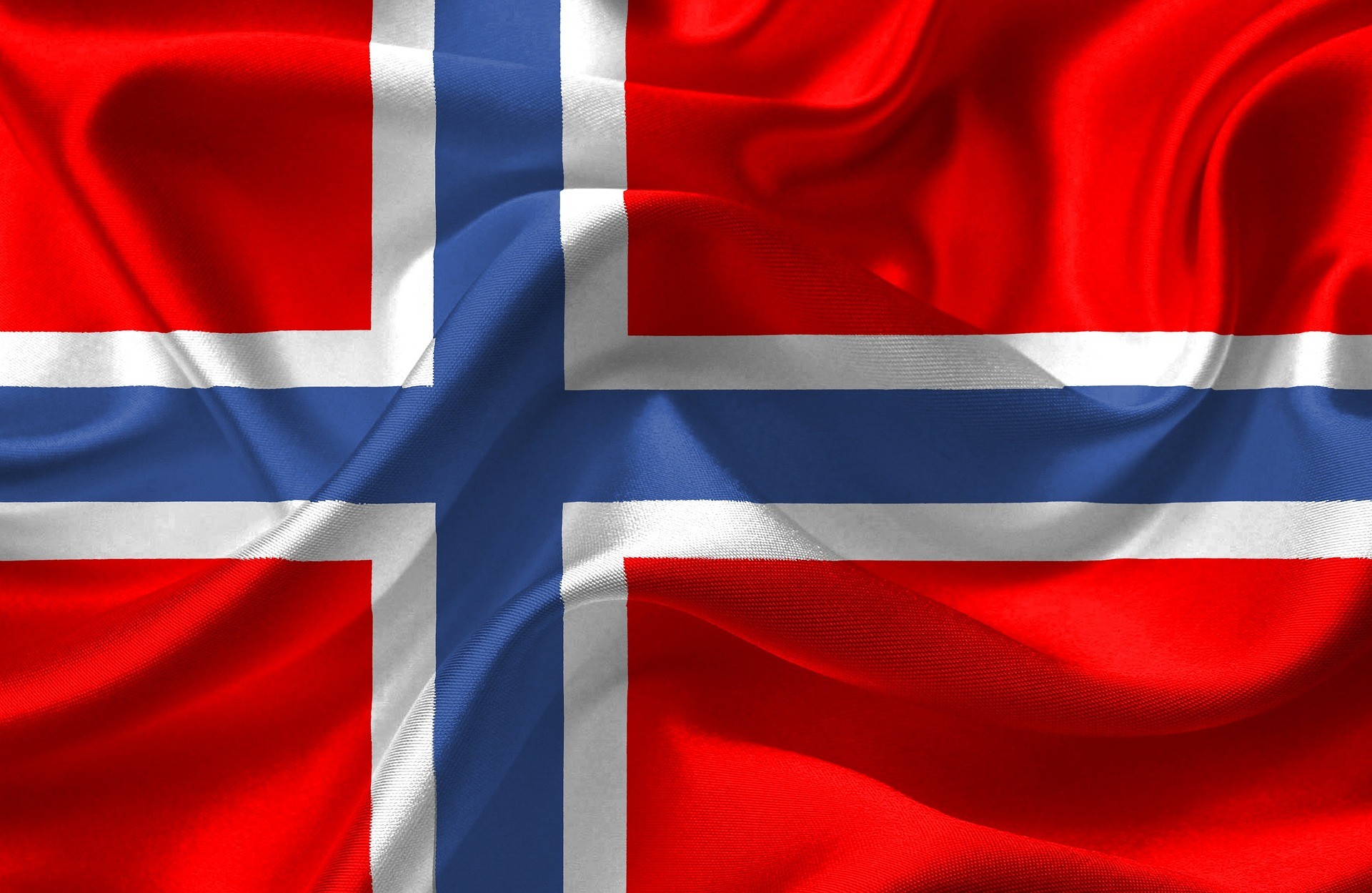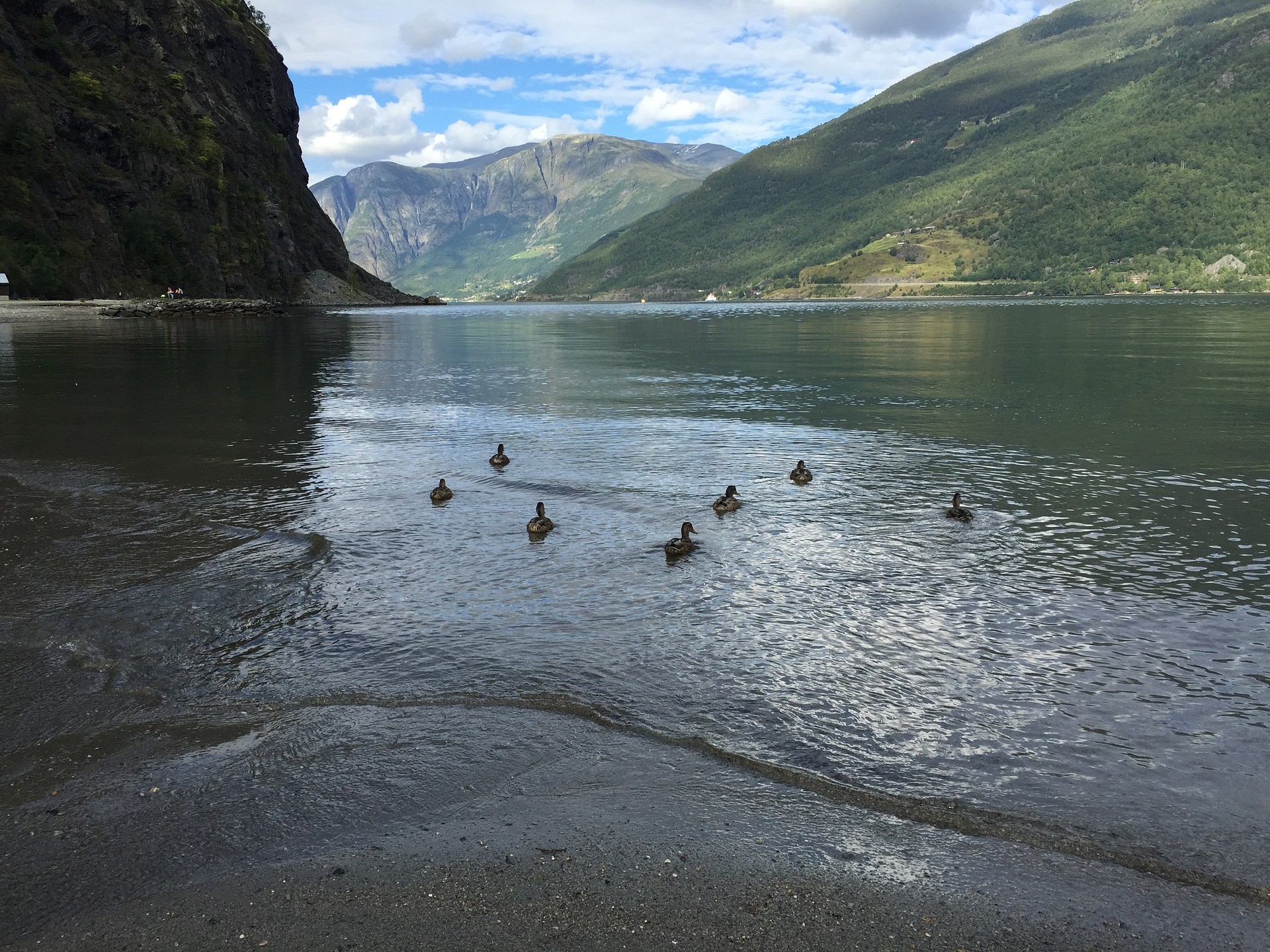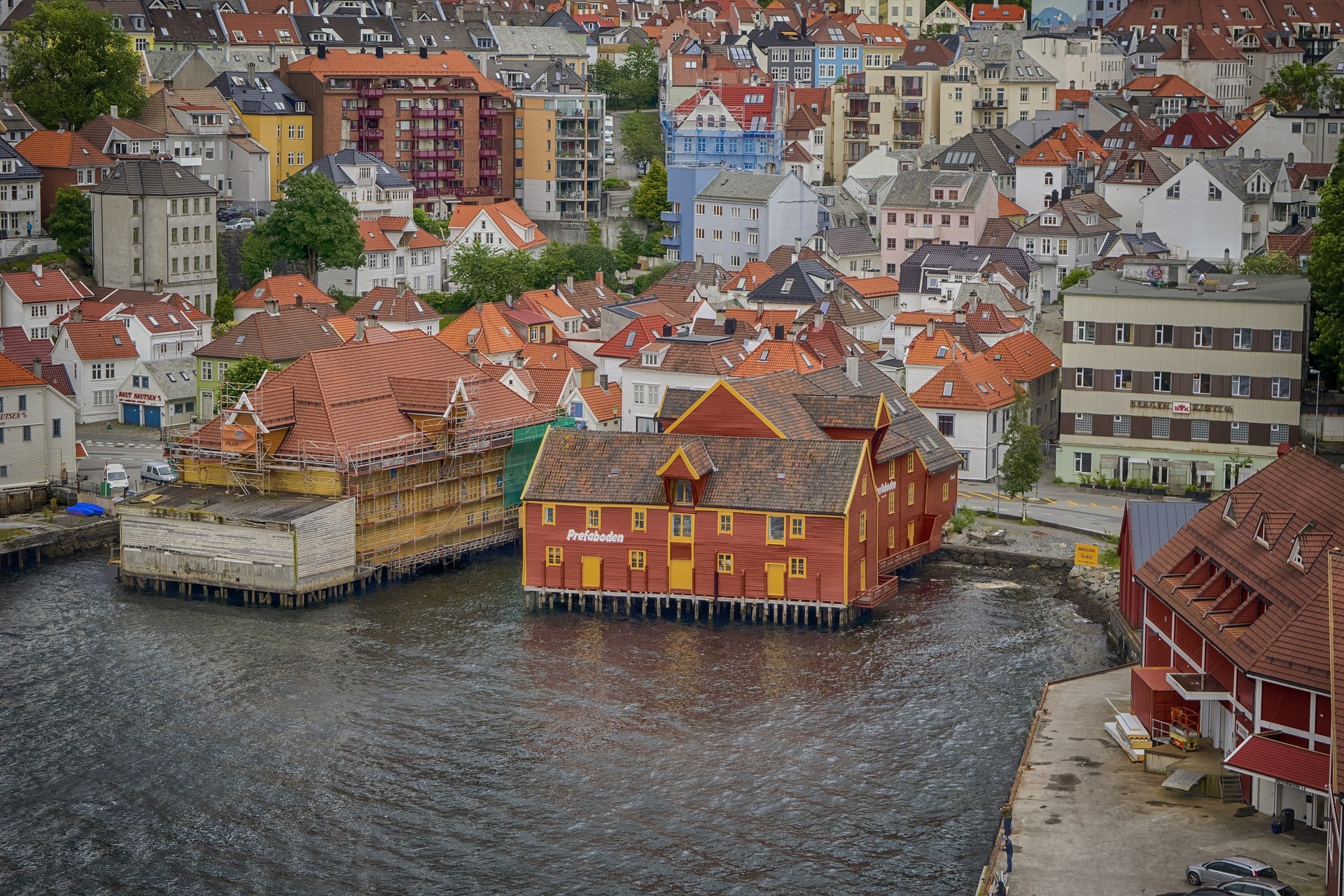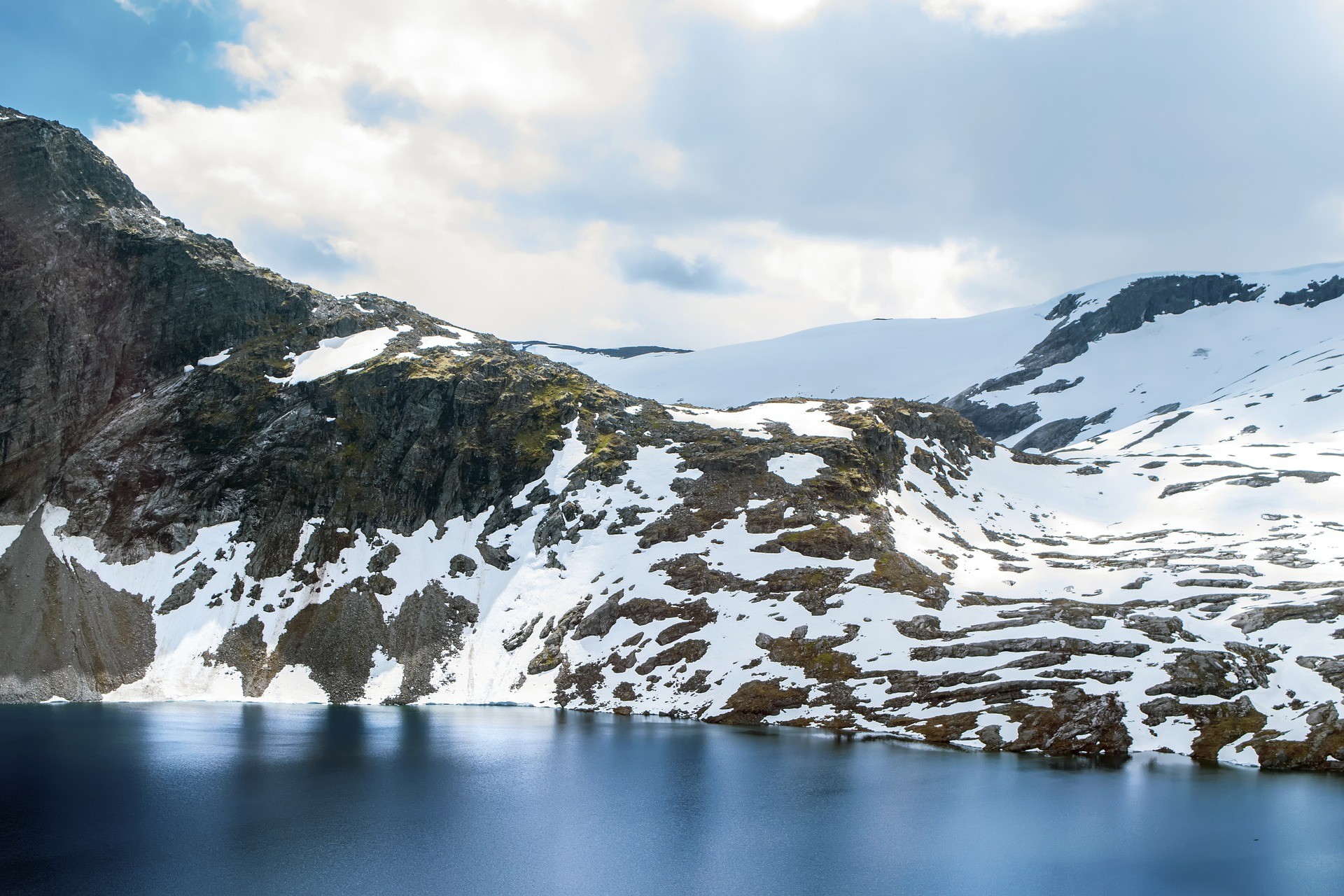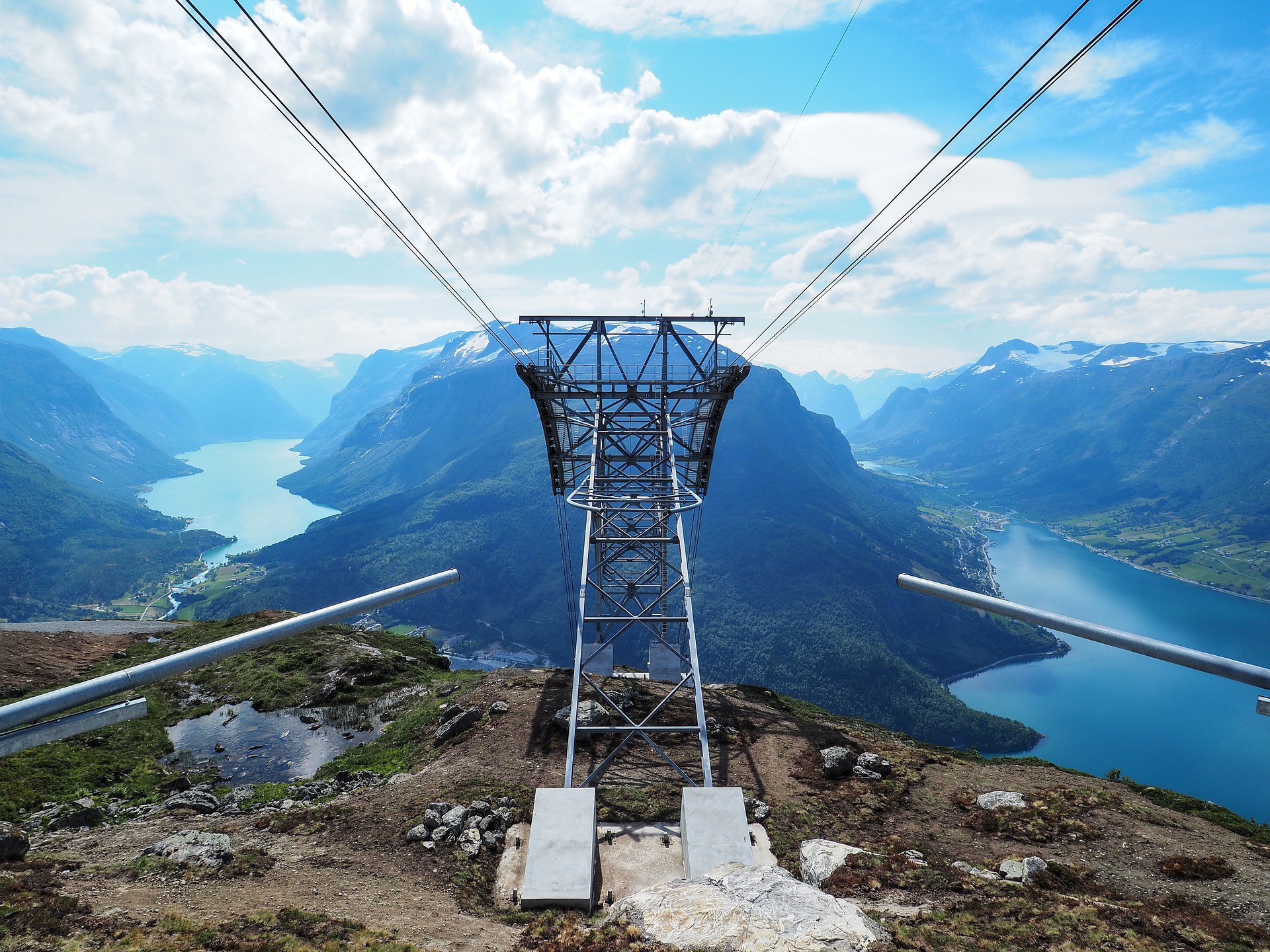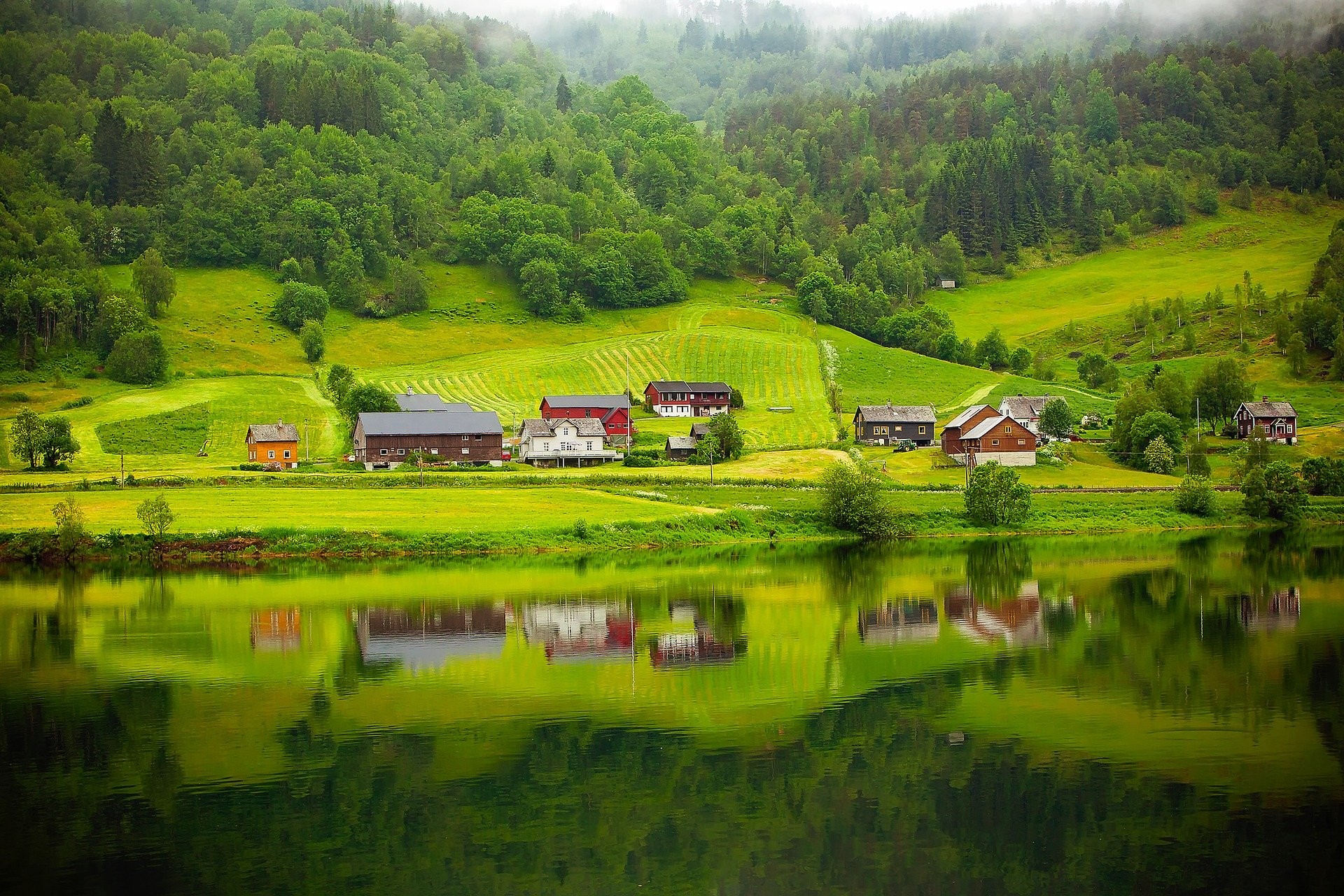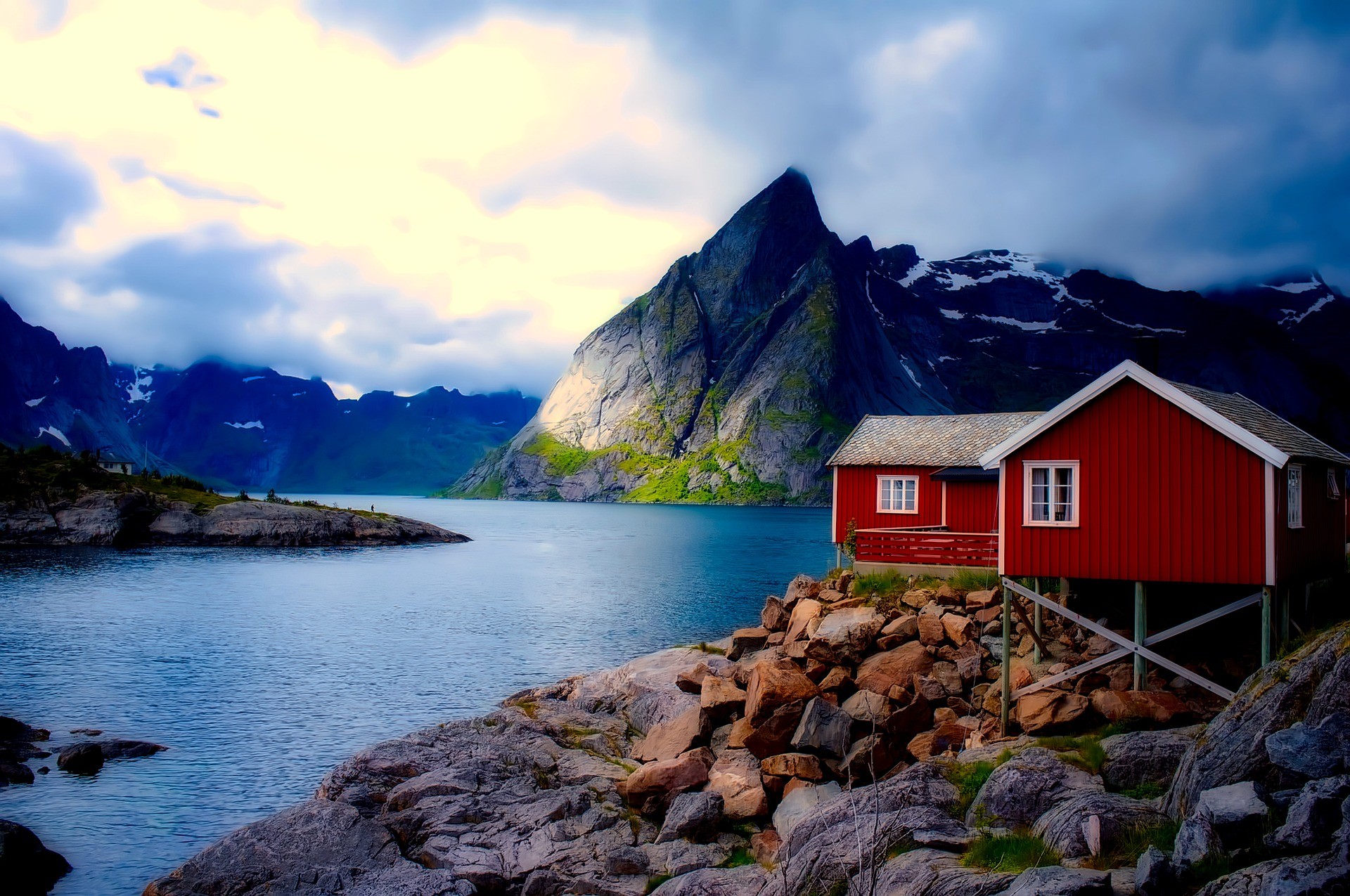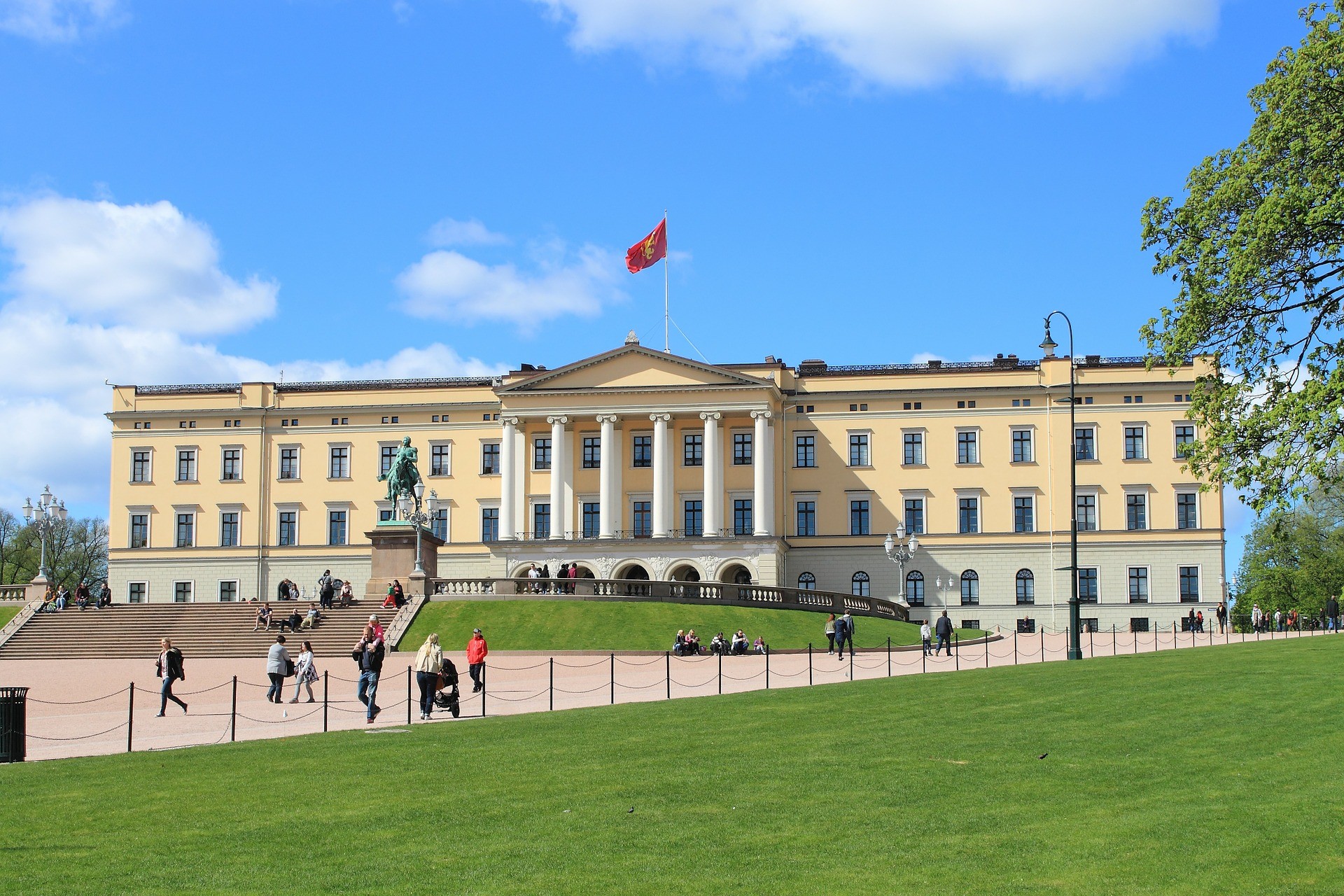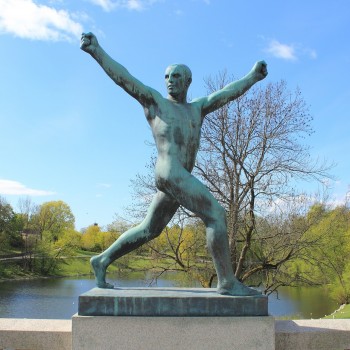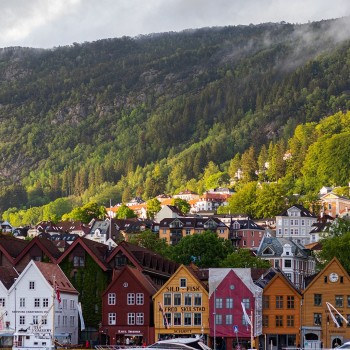Norway
Norway
Capital city description
Oslo is the capital, and the biggest in Norway serves as an economic hub of the country and houses an important agency, the government, and the parliament. It also is an important center for maritime industries and maritime trade in Europe.
The city is also a hub of Norwegian business, banking, industry, and shipping. The city is home to many companies within the maritime sector, some of which are among the world's largest shipping companies, shipbrokers, and maritime insurance brokers.
Climate
Western Norway has a marine climate with mild winters and nearly 90 inches (2,250 mm) of mean annual rainfall during the summer. The Norwegian mainland, sheltered by the mountains, has an inland climate with warm summers, cold winters, and less than 30 inches (760 mm) of mean annual precipitation during the year.
Languages spoken
Norwegian is the primary official language spoken in Norway, spoken by approximately 95 percent of the population.
Fun/Fascinating Facts
- Norway is home to the world's longest road tunnel worldwide. At an incredible 15 miles (24.5 km) long, the Lærdal Tunnel is the longest. It Costs 1 billion Norwegian kroner or a total of $110 million; the tunnel connects the small communities of Lærdal and Aurland.
- Norway houses the 10 of the world's 30 tallest waterfalls. Vinnufossen, at 860 meters, is the tallest of them all and the 6th tallest in the world.
- Since 1901, Oslo has been received "The Nobel Peace Prize Award" annually.
- Norway is one of the happiest countries in the world.
- Norway has the largest concentration of fjords of any country in the world.
Unique Customs/Traditions
- Wedding customs in Norway are rooted in the traditions of the past. All the guests got to the bride's place on narrowboats decorated with fancy ribbons and flowers. Modern Norwegians keep this ancient custom with pleasure, organizing beautiful photo sessions during the boat walk. Additionally, the porridge cooked by the bride on the wedding day is still an essential dish of any wedding table. Norwegian graduating high school students often kick off a month-long celebration at the end of April, called russefeiring; the festivities can include rented buses – or rather, party buses. Students wear colorful costumes during this period.
- Brown cheese is a traditional Norwegian food. Made with cow's or goat's milk, whey, and cream, the cheese has a soft, sticky consistency and tastes almost caramelized.
- One of the most unconventional Norway customs is that the locals take their personal space very seriously. If you happen to use public transport during your Norway vacation, you shouldn't take a seat right next to someone else if there are any other options to choose from.
- Norwegian has a unique Christmas tradition; every Saturday up to December 25, locals light up a beautiful four-candle candelabra with the traditional Advent candles. Other peculiar Christmas traditions in Norway include decorating your home with the statues of nisser, a Scandinavian equivalent of a goblin, dancing around the Christmas tree, and watching the classic British comedy Dinner for One.
- Bunads is a traditional Norwegian dress. Much of the population spends up to 50,000 NOK on the beautiful costumes, including many intricate details. The woven wool skirts or dresses, complete with jackets and scarves, are often accessorized with colorful purses and shoes for women. For men, an embroidered three-piece suit is usually worn. The most famous custom in Norway, or at least one of the most popular ones, is wearing a Bunad during official country celebrations such as Constitution Day in Norway, held on May 17.
Popular universities
| Name | Description | |
|---|---|---|
| University of Oslo | The University of Oslo is a public research university located in Oslo, Norway. Its research units center on life science, energy, Nordic issues, and more. From 1947 to 1989, and in 2020 subsequently, the university hosted the awarding of the Nobel Peace Prize. The University of Oslo consists of eight faculties: educational sciences, natural science, social science, humanities, law, mathematics, medicine, and dentistry. UiO has over 800 courses in English, while several Master’s and Ph.D. programs are held in English entirely. The University of Oslo is the best in Norway for international students. | |
| University of Bergen | The University of Bergen is a public research university in Norway that focuses on marine research, global challenges, and climate & energy transition. It comprises the seven faculties in mathematics & natural sciences, medicine, dentistry, and fine arts. | |
| The University of Tromsø – The Arctic University of Norway | The University of Tromsø – The Arctic University of Norway is a state university in Norway and the world's northernmost university. The university's primary focus is light auroral research, space science, fishery science, biotechnology, linguistics, multicultural societies, Saami culture, telemedicine, epidemiology, and a broad spectrum of Arctic research projects. | |
| Norwegian University of Science and Technology | The Norwegian University of Science and Technology is a public research university in Norway. Norwegian University of Science and Technology is one of the best universities in Norway for international students. The university is best known for engineering, technology, and natural science. It also offers degree programs in teacher education, social sciences, medicine, psychology, architecture, and fine arts. | |
| Norwegian University of Life Sciences | Norwegian University of Life Sciences is a Norwegian public university specializing in human and animal health, resource management, etc. The university comprises seven faculties: biosciences, environmental sciences, landscape & society, chemistry, economics, veterinary medicine, and science & technology. | |
| University of South-Eastern Norway | The University of South-Eastern Norway is a Norwegian state university. The University of South-Eastern Norway offers programs in health & social care, computer science, history, business, mathematics, natural sciences, maritime studies, and art. The university has a focus on applied research and coordinates with regional industries. It focuses on being an entrepreneurial university that contributes to innovation and sustainable development of the world. | |
| University of Stavanger | The University of Stavanger is a leading research university in Norway that ranks the third-highest in research publications per scientific staff member. The University of Stavanger comprises six faculties like social sciences, arts & education, and science & technology, to name a few. The university offers doctorates in Literacy; Risk Management and Societal Safety; Educational Sciences; Health and Medicine; Management, Economics, and Tourism; Sociology, Social Work and Culture & Society; Chemistry and Biological Science; Offshore Technology; Petroleum Technology; Risk Management and Societal Safety- Technical/Scientific Approach; and Information Technology, Mathematics, and Physics. | |
| University of Agder | Established in 1994, the University of Agder is a public university with Kristiansand and Grimstad, Norway campuses. The University of Agder has six faculties: School of Business and Law, Faculty of Social Sciences, Faculty of Fine Arts, Faculty of Health and Sport Sciences, Faculty of Humanities and Education, Faculty of Engineering and Science, and Teacher Education Unit. The University of Agder offers degrees in the social sciences, business, health & sports science, fine arts, humanities, engineering, & science. There is also an interdisciplinary teaching education unit. | |
| BI Norwegian Business School | The BI Norwegian Business School is Norway’s most prominent business school and the second largest in Europe. This specialized institution is the primary administrative and economic talent supplier to the Norwegian workforce. The BI Norwegian Business School offers a complete set of programs for bachelor, master, and doctoral degrees and executive education and tailor-made programs for businesses. It received recognition from significant business school accreditations like AMBA and EQUIS. | |
| Norwegian School of Economics | Norwegian School of Economics is the first business school located in Bergen, Norway. Since 1936, it has been pioneering teaching and research in economics and business administration. The school offers one three-year undergraduate program in Economics and Business Administration, taught in Norwegian. It also provides a master's program in Accounting and Auditing and the CEMS Master's in International Management, which is currently ranked as the world's second-best Master's in Management program by the Financial Times. | |
Festivals & Events
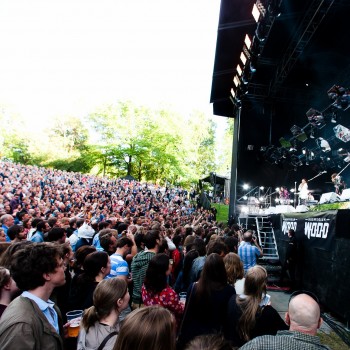
Norwegian Wood Festival
Date: June
The Norwegian Wood Festival is one of Norway's most famous rock festivals. The festival's name refers to the favorite Beatles song "Norwegian Wood." The annual 4-day event is held in mid-June in the open-air bath Frognerbadet in Oslo.
It offers the best Norwegian bands as well as international artists. Notable acts in the past have included Bob Dylan, Johnny Cash, David Bowie, and Sting.

Oslo Jazz Festival
Date: August
Launched in 2011, Oslo Jazz Festival is a six-day festival held in August. It has held up to 70 concerts with 450 musicians on 18 stages in the past. The shows represent jazz and related music spectrum, from gospel and blues to Latin jazz and electronica. International stars such as Phil Woods, Dee Dee Bridgewater, Bobby McFerrin, Brad Meldau, Django Bates, and Illinois Jaquet Big Band have all been featured at the Oslo Jazz Festival.
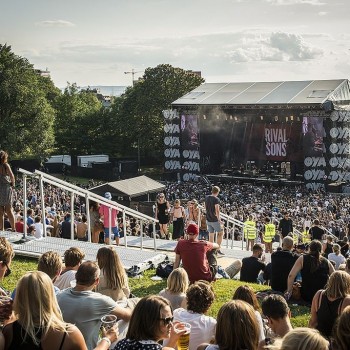
Oya festival
Date: August
The Oya festival is one of the largest of Norway's music festivals. It is an annual outdoor music festival lasting for four days and featuring top musicians, namely Sonic Youth, Arctic Monkeys, The Stooges, Beck, etc.
The festival is held in the central park area and is preceded by a club night where the festival holds concerts in more or less all of Oslo's major clubs.
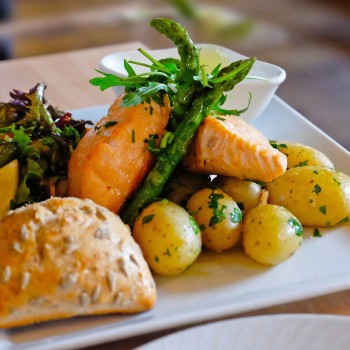
Gladmat
Date: July
Gladmat is a rich food festival held every July along Vaagen, the main harbor in Stavanger, Norway. The finest local restaurants prepare their signature dishes; top-class chefs present their delicious creations on gala dinners, and regional producers sell their artisan products and homemade foods at a gourmet market.
Attracting over 200000 people worldwide, Gladmat is indeed a festival every gastronomist should look forward to. It certainly brings you a taste of happiness served in the form of a food festival bringing together families, friends, and chefs at a single place. The festival also features tutored wine tastings, cooking classes, and competitions.
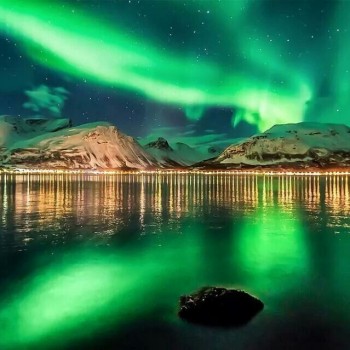
Northern Lights Festival
Date: January
Northern Lights Festival began as a purely classical music festival in 1988 but has since evolved to incorporate genres from opera and jazz to chamber music and symphonic orchestras.
The program offers music in concert halls, churches, pubs, dance, theatre, and music ensembles of different sizes and types. It provides the perfect opportunity to combine unrivaled sky views with the best of Norwegian culture in traditional music.
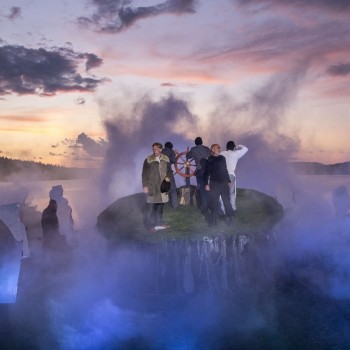
Peer Gynt Festival
Date: August
Peer Gynt Festival, organized by some volunteers from the valley for the cause, brings together some brilliant professional actors and musicians to fascinate the people with one of the finest theatre productions of all time.
The festival celebrates Ibsen's "Peer Gynt" and the historical person Per Gynt, who lived in the Gudbrandsdalen valley. Peer Gynt is a five-act play in verse by the Norwegian dramatist Henrik Ibsen published in 1867.

Nordland Music Festival
Date: August
Nordland Music Festival has been taking place in Bodø, the capital of Nordland county, since 1980 and is one of the biggest festivals in Norway; it is a music festival that presents a wide range of genres.
The program consists of classical music and jazz, contemporary, folk, musical theater, dance, pop/rock, and more. The festival week is held in various indoor and outdoor venues all around the city.
Attractions / Top Sights
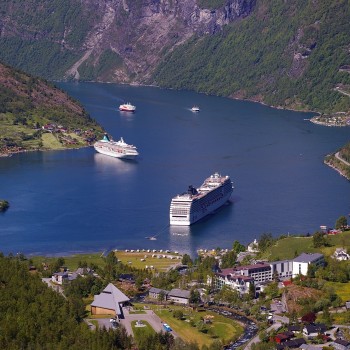
Geirangerfjord
When to visit: July and August
One of the most beautiful fjords and the most-visited tourist attraction, Geirangerfjord, is located in southwestern Norway near the coastal town of Ålesund.
Stretching for more than 15 km (9 miles) long, Geirangerfjord is a natural wonder of deep blue water surrounded by majestic cliffs and lush green mountains towering more than 1,000 meters (3,500 feet) high. Several stunning waterfalls and lush countryside dotted with picturesque farms are added to this gorgeous scenery.

Preikestolen
When to visit: April to October
Located near the Western part of the fjord, a breathtaking Preikestolen or Prekestolen or 'The Pulpit Rock' is a famous tourist attraction in the municipality of Strand in Rogaland county, Norway.
Preikestolen is a cliff that rises 604 meters (1,982 ft) above Lysefjorden. There is an almost flat top of approximately 25 by 25 meters (82 ft × 82 ft). This site is perfect for the active traveler.
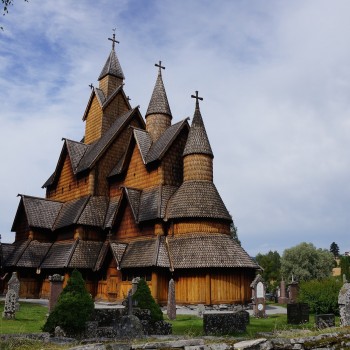
Heddal Stave Church
When to visit: June to August
Built in the 13th century, Heddal Stave Church is Norway’s largest stave church, with triple naves that stand proudly against the sky. Located in Notodden, the church is dedicated to the Virgin Mary. Standing 29 meters tall and featuring three turrets, the church seems like a fairytale wooden cathedral.
The remarkable church is made entirely of wood. Heddal is still used for Sunday services, and even summer weddings are being held in this unique church.
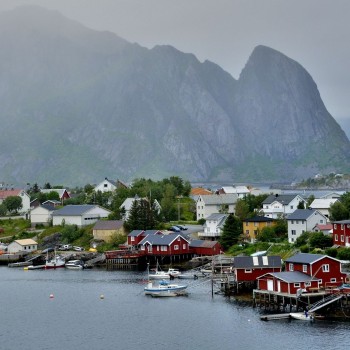
Lofoten Islands
When to visit: In summer
The beautiful Islands of Lofoten are a famous tourist destination for locals and foreigners alike in Norway. Lofoten has remarkable scenery with picturesque mountains and peaks, open sea and sheltered bays, beaches, and pristine lands. Tourists flock to Lofoten to enjoy the beaches, explore traditional fishing villages, kayaks, hike, and see the wildlife.
Lofoten offers numerous rock climbing and mountaineering opportunities. The main center for rock climbing is Henningsvær on Austvågøya. It has 24 hours of daylight in the summer and has Alpine-style ridges, summits, and glaciers.
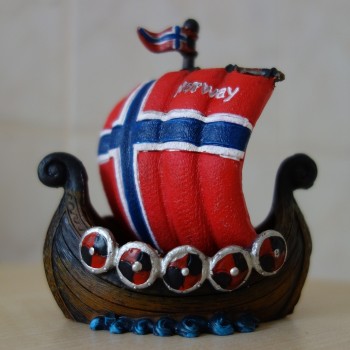
Viking Ship Museum
When to visit: May to September
One of the largest Norway museums, specially dedicated to their seafaring ancestors, the Viking Ship Museum (Vikingskipshuset på Bygdøy) in Oslo, features three 9th-century Viking vessels. The list includes ships from Gokstad, Oseberg, and Tune, including two of the best-preserved wooden vessels in the world from that era.
The Oseberg ship is the best preserved and was found in a burial mound on a farm near Oseberg. The museum also displays textiles, tools, household items, and items found in Viking tombs.
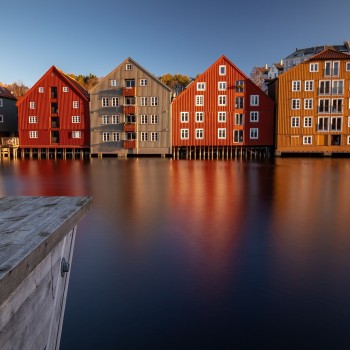
Sognefjord
When to visit: In summer
When to visit: https://www.visitnorway.com/places-to-go/fjord-norway/the-sognefjord-area/
The largest and deepest fjord in Norway, Sognefjord, popularly known as the King of the fjord, Sognefjord is more than 1,000 meters (3,300 ft) deep for about 100 kilometers (60 mi) of its length, from Rutledal to Hermansverk.
The Sognefjord consists of the fjord arms Fjærlandsfjord, Aurlandsfjord, Nærøyfjord, Lærdalsfjord, Sogndalsfjord, Årdalsfjord and Lustrafjord in addition to the Sognefjord itself, which is the main fjord. Sognefjord is surrounded by many stunning tourist attractions and offers many exciting activities and an unforgettable experience. Tourists can hike through wild valleys and explore the unique local culture. Boats connect settlements along the fjord and its sidearms.
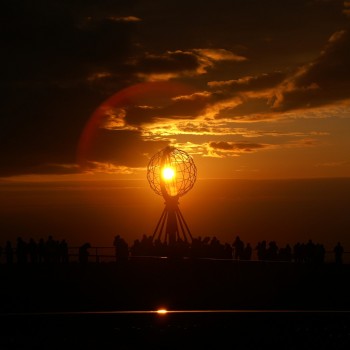
Nordkapp
When to visit: May to June
Nordkapp is a municipality in Troms og Finnmark county, Norway. It is the northernmost point in Europe connected with the international road network. Nordkapp is specifically a summer goal, attracting hundreds of thousands of visitors yearly.
Nordkapp offers stunning picturesque views, with plenty of opportunities to hike under the Arctic sun or see puffins in their native habitat. The main tourist attractions are the North Cape and the nearby Knivskjellodden.
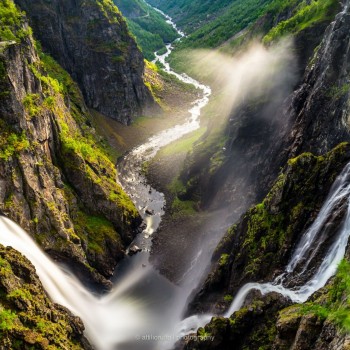
Vøringfossen
When to visit: Between May and October
Vøringfossen is Norway’s most well-known waterfall, cascading down 180 meters (600 feet) in a series of drops, though it ranks only 83rd on Norway’s highest waterfalls list.
It is located at Mabodelen, a narrow valley between Oslo and Bergen. Vøringfossen is one of the most-visited attractions in Norway, enticing thousands of visitors annually.
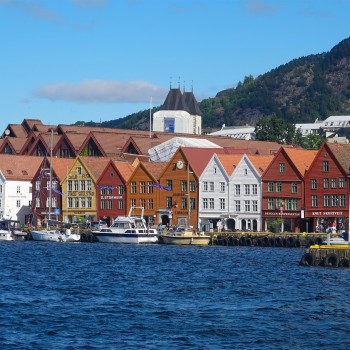
Bryggen Hanseatic Wharf
When to visit: Between May and October
When to visit: https://whc.unesco.org/en/list/59
Bryggen Hanseatic Wharf is a famous tourist spot and serves as a harbor district in Bergen. It is one of North Europe’s oldest port cities on the west coast of Norway which was established as a center for trade by the 12th century.
Presently, the ancient port city houses several historic buildings that portray life during the Middle Ages and boutiques, restaurants, and the Bryggen Museum. Due to its remarkable best-preserved buildings and cultural heritage, it is listed on Unesco World Heritage Site.
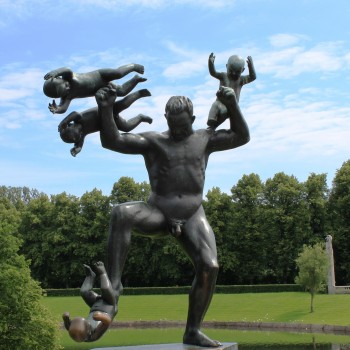
Vigeland Sculpture Park
When to visit: May to August
One of Oslo's top tourist attractions is home to 650 sculptures created by Gustav Vigeland, the Vigeland Sculpture Park. These sculptures made of wrought iron, bronze, and granite are arranged in five themed groups.
The most famous of these are in the fountain group, which depicts the cycle of human life, culminating in a 16-meter monolith. This sculptures collection is found within the large Frogner Park, which houses the Vigeland Museum and the Oslo City Museum. Also located here are numerous recreational facilities, including Norway's most giant playground and an expansive rose garden.















